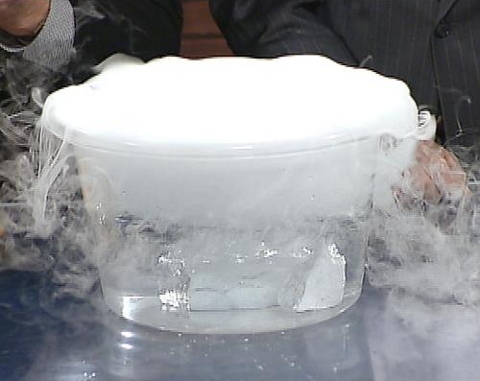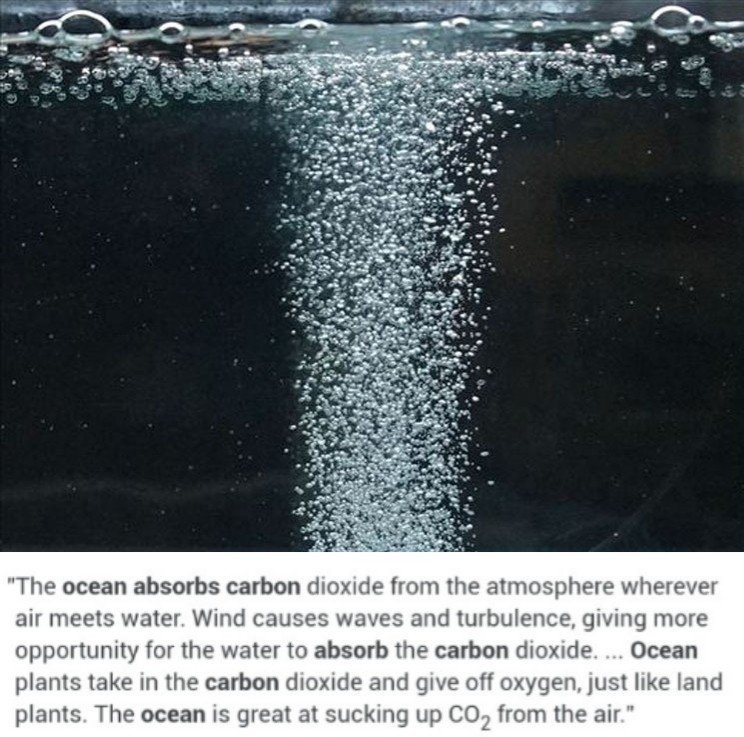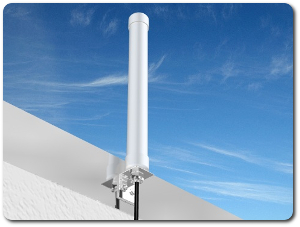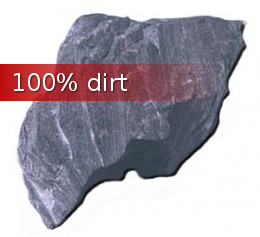Nuclear reactor core injection of a high concentration of CO2 can save Japan.
Latest news, World news Thursday, March 17th, 2011
The situation in Japan is getting worse by the hour. The 9.0 earthquake and tsunami of March 11, 2011 has created a doomsday scenario for the Japanese people and perhaps the World as the nuclear reactors damaged by the earthquake and tsunami are going critical. The race is now on to cool the reactor core rods in order to prevent a meltdown. Sea water is now being airlifted and dropped onto the exposed reactor core rods in a futile attempt to keep them cool. There is however a much easier way to cool the rods and prevent a meltdown. Dumping sea water onto the rods only fuels the fires in the reactor core. Salt water is composed of hydrogen and oxygen and hydrogen is a very combustible fuel. The temperature of the rods in the reactor core is already hot enough to instantly vaporize the water that is being airlifted and dropped. The sea water is instantly converted from a liquid state to a gas state whereby hydrogen is instantly released to the core and will actually increase the temperature.
You may already have read a previous article on this website titled “Sea water – the World’s cheapest, cleanest and most abundant fuel source“. In the article it was reported that A Canadian owned entrepreneurial company called FuelReducer has been working on developing new energy technology that will drastically reduce our dependency on oil. FuelReducer’s H2O – Water for Fuel Project is focusing on fueling the World with sea water instead of oil or gas. The article goes on to state how sea water is converted to energy by Cold Fission. Cold Fission is defined as “the splitting of an atomic nucleus resulting in the release of large amounts of energy“. That is exactly what is happening when sea water is being airlifted and dumped on the failing reactor core rods.
Water’s chemical description is H2O – that is one atom of oxygen bound to two atoms of hydrogen. The hydrogen atoms are “attached” to one side of the oxygen atom, resulting in a water molecule having a positive charge on the side where the hydrogen atoms are and a negative charge on the other side, where the oxygen atom is. Since opposite electrical charges attract, water molecules tend to attract each other, making water kind of “sticky.” The side with the hydrogen atoms (positive charge) attracts the oxygen side (negative charge) of a different water molecule. All these water molecules attracting each other mean they tend to clump together forming water drops. As more water drops are formed they stick to each other to form a liquid state of water. Cold Fission is used to reverse the process – return water or split the liquid state of water back to its three atoms; an oxygen atom and two hydrogen atoms. The bond between the oxygen and hydrogen atoms are very strong. The bond needs to be broken and Cold Fission does this. Nuclear fission does this to uranium and when the rods are exposed they heat up to a point whereby they start to instantly convert liquid water into hydrogen gas. The buildup of this hydrogen and oxygen gas that was created by the fission of liquid water will eventually cause a hydrogen explosion. This hydrogen explosion has already happened at the Japan nuclear power stations. The buildup of hydrogen gas inside the dome created a hydrogen bomb. So if water is to blame for the explosions which is now causing the exposed reactor fuel rods to reach meltdown temperatures what can be done to stop the meltdown?
One suggestion comes from the editor of this website. With all of the talk of global warming and the alleged effect CO2 has on accelerating global warming most people don’t realize that CO2 also has a cooling effect. How many have in the past taken science classes whereby your teacher introduces you to dry ice? Dry ice is used as a cooling agent. Dry ice is the solid form of carbon dioxide which is CO2. Dry ice – CO2 – changes from a solid to a gas with no intervening liquid form, through a process called sublimation. The low temperature and direct sublimation to a gas makes dry ice an effective coolant, since it is colder than water ice. Instead of adding sea water to the overheating nuclear reactor core rods add dry ice.
Don’t have a large enough supply of dry ice to effectively cool the rods. Then create a downdraft using jet engines. The jet engines placed around the damaged reactors will suck in a very large amount of air from the surrounding area. By using jet engines an artificial jet stream can be created and can cool the core. Strategically placed jet engines can draw air into the core at a very high velocity. The very hot jet exhaust can also incinerate the radioactive air particles as they flow though the jet engine. The effect is the same as when you drive your car on the highways. Air intake through the radiator on your car cools the very hot radiator fluid in the radiator preventing a meltdown of the engine’s push rods.
How many times have you’ve been stuck in traffic in the middle of a heatwave? Your car can overheat when it is just sitting in traffic, even though it has a liquid coolant (combination of water and antifreeze), but as soon as you start moving the air intake immediately starts cooling down your car’s engine.
Short URL: https://presscore.ca/news/?p=1664

 The Halifax International Security Forum was founded in 2009 as a propaganda program within the German Marshall Fund (founded June 5, 1972 by West German Chancellor Willy Brandt) by the Crown in Canada using Crown Corp ACOA & DND funds. The Halifax International Security Forum is a front that is used to recruit top US, UK and Canadian gov and military officials as double agents for Canada's WWI, WWII enemy and wage new Vatican Germany Cold War.
High Treason: s.46 (1) Every one commits high treason who, in Canada (c) assists an enemy at war with Canada, ..., whether or not a state of war exists". Every one who, in Canada assists Canada's enemies wage "piecemeal WWIII" Cold War by organizing, funding and participating in the Germany government politically and militarily benefitting / lead Halifax International Security Forum is committing high treason.
The Halifax International Security Forum was founded in 2009 as a propaganda program within the German Marshall Fund (founded June 5, 1972 by West German Chancellor Willy Brandt) by the Crown in Canada using Crown Corp ACOA & DND funds. The Halifax International Security Forum is a front that is used to recruit top US, UK and Canadian gov and military officials as double agents for Canada's WWI, WWII enemy and wage new Vatican Germany Cold War.
High Treason: s.46 (1) Every one commits high treason who, in Canada (c) assists an enemy at war with Canada, ..., whether or not a state of war exists". Every one who, in Canada assists Canada's enemies wage "piecemeal WWIII" Cold War by organizing, funding and participating in the Germany government politically and militarily benefitting / lead Halifax International Security Forum is committing high treason.
 Please take a moment to sign a petition to
Please take a moment to sign a petition to 









































 1917 Code of Canon Law, Canon 185 invalidates (voids) all papacies since October 26, 1958 due to the fact Cardinal Giuseppe Siri was elected Pope on the Third ballot on Oct 26 1958 but the new Pope Gregory XVII was illegally prevented from assuming the office. A Pope was elected on October 26, 1958. Thousands of people witnessed a new Pope being elected by seeing white smoke and millions were informed by Vatican radio broadcasts beginning at 6:00 PM Rome time on October 26, 1958. The papacy of Francis, Benedict, John Paul II, John Paul I, Paul VI, John XXIII and any and all of their respective doctrines, bulls, letter patents and the Second Vatican Council are all invalidated (having no force, binding power, or validity) by Canon 185 because the 1958 conclave of cardinals elected Cardinal Giuseppe Siri Pope on Oct 26 1958. Cardinal Giuseppe Siri accepted the papacy by taking the name Pope Gregory XVII but was illegally prevented from assuming his elected office.. According to Canon 185 Cardinal Angelo Giuseppe Roncalli illegally assumed the papacy 2 days later by fraud and grave fear, unjustly inflicted against Cardinal Giuseppe Siri who was lawfully elected Pope Gregory XVII. Because no Pope has been lawfully elected since October 26, 1958 the Holy See (la Santa Sede/Seat) remains vacant.
1917 Code of Canon Law, Canon 185 invalidates (voids) all papacies since October 26, 1958 due to the fact Cardinal Giuseppe Siri was elected Pope on the Third ballot on Oct 26 1958 but the new Pope Gregory XVII was illegally prevented from assuming the office. A Pope was elected on October 26, 1958. Thousands of people witnessed a new Pope being elected by seeing white smoke and millions were informed by Vatican radio broadcasts beginning at 6:00 PM Rome time on October 26, 1958. The papacy of Francis, Benedict, John Paul II, John Paul I, Paul VI, John XXIII and any and all of their respective doctrines, bulls, letter patents and the Second Vatican Council are all invalidated (having no force, binding power, or validity) by Canon 185 because the 1958 conclave of cardinals elected Cardinal Giuseppe Siri Pope on Oct 26 1958. Cardinal Giuseppe Siri accepted the papacy by taking the name Pope Gregory XVII but was illegally prevented from assuming his elected office.. According to Canon 185 Cardinal Angelo Giuseppe Roncalli illegally assumed the papacy 2 days later by fraud and grave fear, unjustly inflicted against Cardinal Giuseppe Siri who was lawfully elected Pope Gregory XVII. Because no Pope has been lawfully elected since October 26, 1958 the Holy See (la Santa Sede/Seat) remains vacant.
 Hold the Crown (alias for temporal authority of the reigning Pope), the Crown appointed Governor General of Canada David Lloyd Johnston, the Crown's Prime Minister (servant) Stephen Joseph Harper, the Crown's Minister of Justice and Attorney General Peter Gordon MacKay and the Crown's traitorous military RCMP force, accountable for their crimes of treason and high treason against Canada and acts preparatory thereto. The indictment charges that they, on and thereafter the 22nd day of October in the year 2014, at Parliament in the City of Ottawa in the Region of Ontario did, use force and violence, via the staged false flag Exercise Determined Dragon 14, for the purpose of overthrowing and besieging the government of Canada contrary to Section 46 of the Criminal Code. In a society governed by the rule of law, the government and its officials and agents are subject to and held accountable under the law. Sign the online
Hold the Crown (alias for temporal authority of the reigning Pope), the Crown appointed Governor General of Canada David Lloyd Johnston, the Crown's Prime Minister (servant) Stephen Joseph Harper, the Crown's Minister of Justice and Attorney General Peter Gordon MacKay and the Crown's traitorous military RCMP force, accountable for their crimes of treason and high treason against Canada and acts preparatory thereto. The indictment charges that they, on and thereafter the 22nd day of October in the year 2014, at Parliament in the City of Ottawa in the Region of Ontario did, use force and violence, via the staged false flag Exercise Determined Dragon 14, for the purpose of overthrowing and besieging the government of Canada contrary to Section 46 of the Criminal Code. In a society governed by the rule of law, the government and its officials and agents are subject to and held accountable under the law. Sign the online  Two of the most obvious signs of a dictatorship in Canada is traitorous Stephen Harper flying around in a "military aircraft" and using Canadian Special Forces "military" personnel from JTF2 and personnel from the Crown's traitorous martial law "military" RCMP force as his personal bodyguards.
Two of the most obvious signs of a dictatorship in Canada is traitorous Stephen Harper flying around in a "military aircraft" and using Canadian Special Forces "military" personnel from JTF2 and personnel from the Crown's traitorous martial law "military" RCMP force as his personal bodyguards.




































